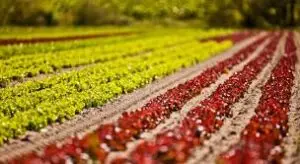No products in the cart.
Regenerative Agriculture: Enhancing Sustainability and Soil Health
Regenerative Agriculture: A Sustainable Future for Our Planet
Introduction
In recent years, the concept of regenerative agriculture has gained significant attention as a sustainable and environmentally friendly approach to farming. But what exactly is regenerative agriculture, and why is it crucial for the future of our planet? In this article, we’ll delve into the principles, benefits, and real-world applications of regenerative agriculture, providing you with a comprehensive understanding of this transformative practice.

Table of Contents
| Sr# | Headings |
|---|---|
| 1. | What is Regenerative Agriculture? |
| 2. | Principles of Regenerative Agriculture |
| 3. | Benefits for the Environment |
| 4. | Improving Soil Health |
| 5. | Biodiversity Conservation |
| 6. | Carbon Sequestration |
| 7. | Water Management |
| 8. | Economic Viability |
| 9. | Real-World Examples |
| 10. | Challenges and Limitations |
| 11. | Conclusion |
| 12. | FAQs |
What is Regenerative Agriculture?
Regenerative agriculture is an innovative approach to farming that focuses on improving the health of ecosystems. Unlike traditional farming methods that often deplete natural resources, regenerative agriculture aims to enhance them. This practice involves techniques such as minimal soil disturbance, diverse crop rotations, and cover cropping. By mimicking natural processes, regenerative agriculture promotes soil regeneration, biodiversity, and carbon sequestration.
Principles of Regenerative -Agriculture
Holistic Management
Regenerative -agriculture takes a holistic approach, considering the farm as a whole ecosystem rather than separate parts. This approach integrates livestock and crops synergistically, improving overall sustainability.
Diverse Crop Rotations
Instead of monoculture, regenerative farms rotate crops to improve soil health and reduce pests and diseases naturally.
Minimal Soil Disturbance
By minimizing tilling and plowing, regenerative farmers preserve soil structure, prevent erosion, and maintain beneficial soil organisms.
Benefits for the Environment
Regenerative- agriculture offers numerous benefits for the environment, making it a key player in sustainable farming practices.
Improving Soil Health
Regenerative practices enhance soil fertility and structure, promoting healthier crops without the need for chemical fertilizers.
Biodiversity Conservation
By promoting diverse habitats for plants and animals, regenerative -agriculture supports biodiversity, preserving endangered species and improving ecosystem resilience.
Carbon Sequestration
Healthy soils enriched by regenerative practices absorb more carbon dioxide from the atmosphere, mitigating climate change.
Water Management
Improved soil structure and cover cropping reduce water runoff and increase groundwater infiltration, benefiting local water cycles.
Economic Viability
Long-Term Cost Savings
While initial costs may be higher, regenerative practices can lead to reduced inputs and higher yields in the long term.
Market Demand
Consumers increasingly prefer sustainably grown produce, creating market opportunities for regenerative farmers.
Real-World Examples
White Oak Pastures, Georgia
This farm has successfully implemented regenerative- agriculture, showing significant increases in soil organic matter and profitability.
Singh Farms, Arizona
Using regenerative techniques, Singh Farms has improved soil health and water efficiency in a desert climate.
Challenges and Limitations
Despite its benefits, regenerative- agriculture faces challenges that must be addressed for widespread adoption.
Knowledge Barriers
Farmers may lack information or training on regenerative techniques, limiting adoption rates.
Initial Costs
Transitioning to regenerative -agriculture can require upfront investment and financial risk.
Conclusion
In conclusion, regenerative -agriculture represents a promising solution to the environmental and economic challenges facing modern agriculture. By focusing on soil health, biodiversity, and climate change mitigation, regenerative practices offer a sustainable path forward for farmers and consumers alike.
FAQs
What are the main principles of regenerative agriculture?
Regenerative agriculture principles include holistic management, diverse crop rotations, and minimal soil disturbance.
How does regenerative agriculture benefit the environment?
It improves soil health, conserves biodiversity, promotes carbon sequestration, and enhances water management.
Are regenerative farming practices economically viable?
Yes, regenerative agriculture can lead to long-term cost savings and market opportunities due to increased consumer demand.
What are some real-world examples of successful regenerative farms?
White Oak Pastures in Georgia and Singh Farms in Arizona have successfully implemented regenerative agriculture practices.
What challenges does regenerative agriculture face?
Challenges include knowledge barriers, initial costs, and resistance to change within the agricultural industry.
Go and turn on towards organic farming to save future and thire save childs:
Elevate Plant Growth with Premium Bone Powder – Buy Now!
Organic Cow Dung Compost: Transform Your Garden Naturally
Premium Humic Acid for Healthy Plants | Enhance Soil & Boost Growth
Boost Plant Growth Naturally with Mustard Cake | Organic Fertilizer
Transform Your Garden with NPK Fertilizer | Boost Growth by 30%
Premium Perlite for Enhanced Gardening | Buy Now
Live Earthworms with Enhance Your Garden (soil health)
1 Neem Khali: Unveiling the Wonders of Nature
1Transform your garden with vermiwash-buy now
1 Premium quality Vermicompost [ केचुआ खाद ]
Follow us:
Tagged Inregenerative agriculture




[…] and harvesting. Imagine having a virtual assistant on the farm that helps monitor everything from soil health to weather patterns. That’s essentially what these tools offer to […]
[…] Enhanced Soil Health: By avoiding chemical fertilizers and pesticides, Rishi Krishi helps improve soil fertility and health over the long term. […]